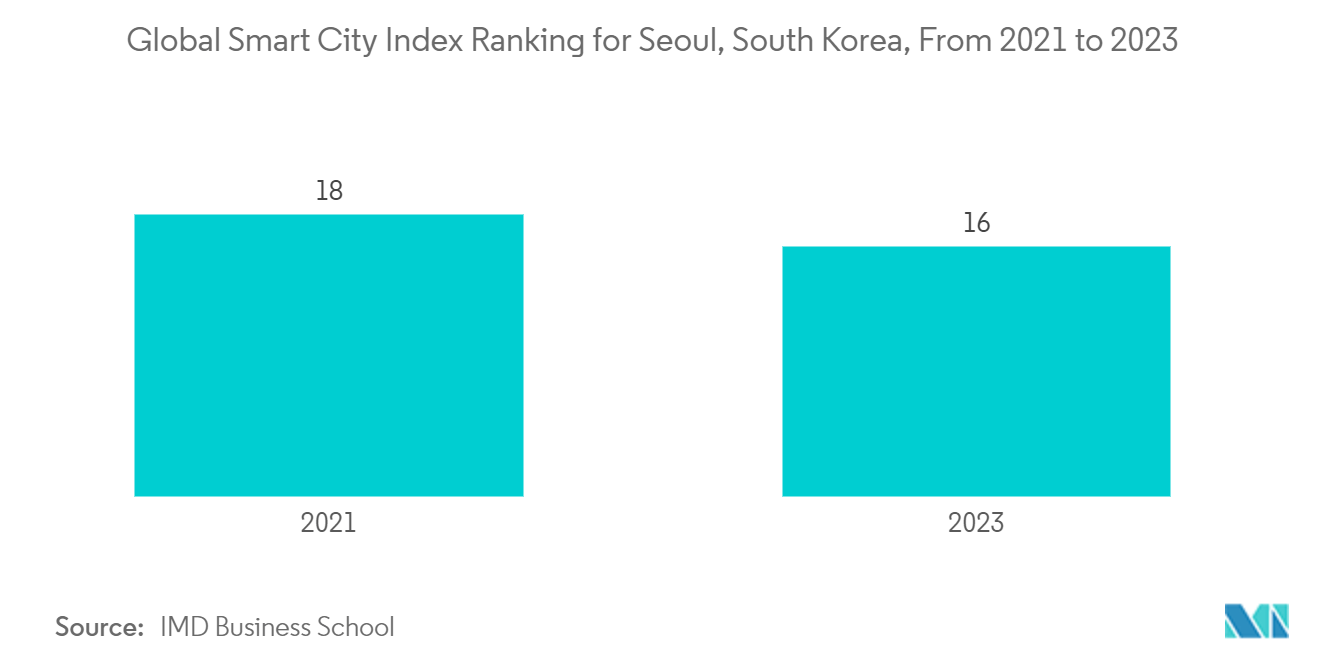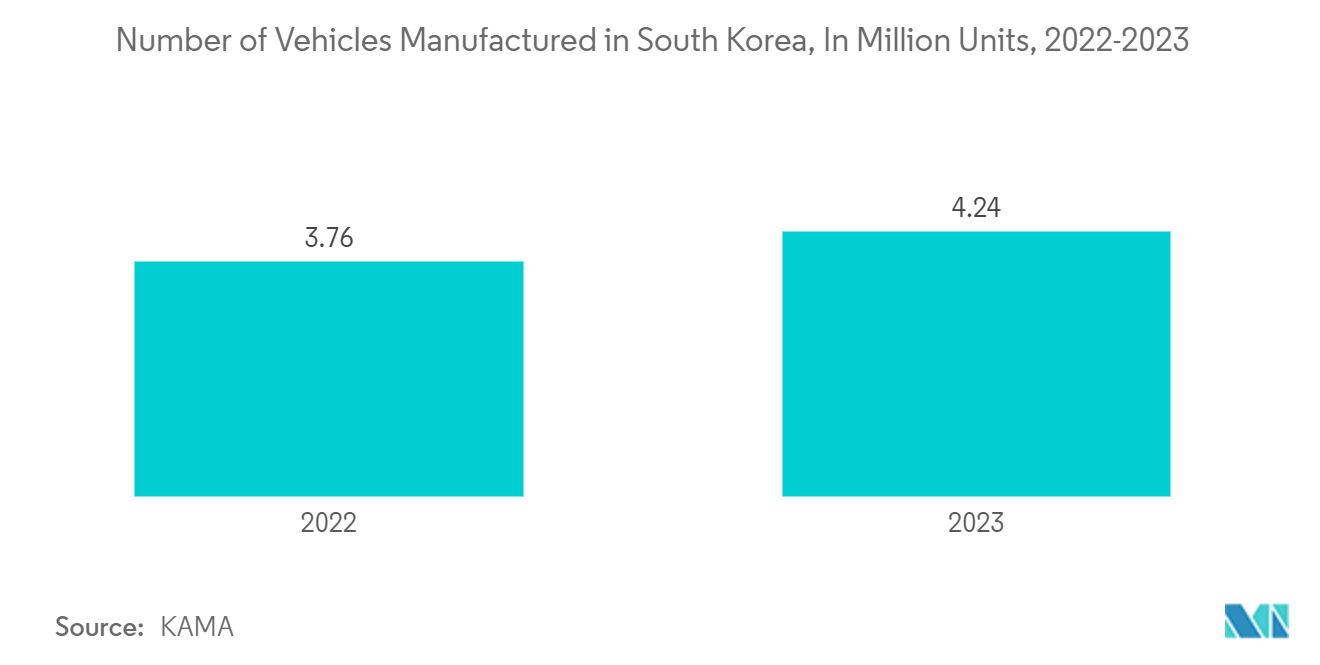Market Trends of South Korea Sensors Industry
The Environmental Sensors Segment is Expected to Witness Significant Growth
- Rapid technological advancements have significantly enhanced the accuracy and stability of environmental sensors. This progress has also ushered in a wave of new sensor types, including wireless, miniature, and intelligent variants. Such innovations promise extensive applications spanning real-time, remote, and intelligent monitoring scenarios.
- In November 2023, researchers at the Incheon National University pioneered advancements in gas sensing technology. The innovative method focuses on developing organic-inorganic hybrid gas sensors boasting exceptional durability, selectivity, and sensitivity.
- Researchers prioritize innovation in environmental sensors, which can be widely utilized in energy management, monitoring nitrogen dioxide in the atmosphere, and transportation, among other applications. In December 2023, the Korea Research Institute of Standards and Science (KRISS) engineered a toxic gas sensor boasting the world's most heightened sensitivity. This groundbreaking sensor excels at monitoring nitrogen dioxide (NO2), a hazardous atmospheric gas, even at room temperature. The sensors have remarkable precision, achieved with minimal power consumption and unparalleled sensitivity.
- With the growing climate change concerns, there is a heightened emphasis on monitoring environmental conditions. Environmental sensors are pivotal in gathering air and water quality data, temperature, and precipitation. Such data is indispensable for comprehending and tackling environmental hurdles.
- Seoul Metro aims to reduce pollution levels to 36% below legal thresholds by 2026, primarily through targeted subway pollution abatement strategies. This includes enhancements to the air circulation systems across tunnels, platforms, and concourses.
- Environmental sensors are crucial in helping cities and towns incorporate technology into their infrastructure and services. These sensors provide essential information that can improve energy efficiency and waste management, leading to overall sustainability. South Korea has been actively involved in the development of smart cities as a way to support the building of smart communities. These smart urban areas utilize technology and data to enhance sustainability and efficiency. With its robust digital infrastructure and widespread availability of technology, South Korea has established a crucial base for smart city projects.

The Automotive Sector is Expected to Hold a Significant Market Share
- The automotive sector significantly boosts the demand for sensors in South Korea because of the diverse range of applications. The automotive industry's requirement for sensors is expected to grow substantially due to the increasing auto sales driven by the rising per capita income, the surge in electric vehicle adoption, and the growing vehicle autonomy. According to KAMA, South Korea produced approximately 4.24 million units of vehicles in 2023, marking a notable rise from the 3.76 million units in the preceding year.
- Moreover, as ADAS applications advance and become more intricate, effective methods will be required to communicate safety alerts and other relevant information to the driver. Head-up displays (HUDs) are an emerging solution that consolidates ADAS data onto a centralized screen, allowing the driver to maintain focus on the road while simultaneously receiving alerts and warnings on the windshield. Such advancements are spurring the demand for sensors in the market.
- South Korea's EV sector is thriving, propelled by the nation's genuine backing. The government offers a suite of incentives, including tax breaks, financial aid, and substantial R&D funding, to bolster the EV industry. Such initiatives attract investments and propel the sector toward the government's lofty EV adoption targets, driving the market's growth. To bolster EV production for exports, the government is leveraging tax incentives to entice car manufacturers to channel investments of up to KRW 95 trillion (USD 66.03 billion) into EVs by 2026.
- The increasing production and expansion of automotive plants in the country are expected to drive the demand for sensors during the forecast period. In November 2023, Hyundai Motor Co. began constructing a new EV (electric vehicle) manufacturing plant in Ulsan, South Korea. The project carries a total cost of KRW 2 trillion (approximately USD 1.5 billion). The plant, set to be finished in 2025, is planned with a production capacity of 200,000 units annually.


